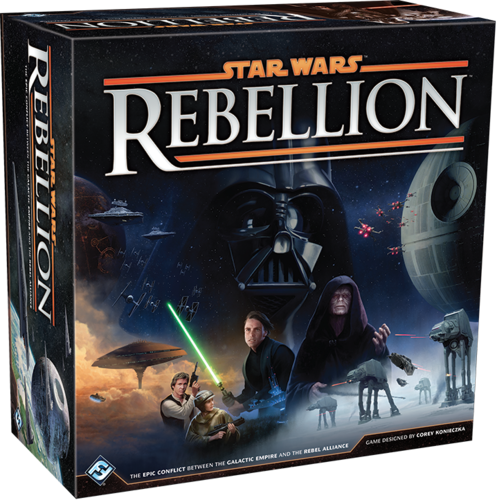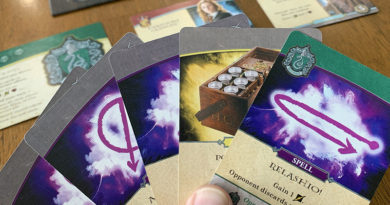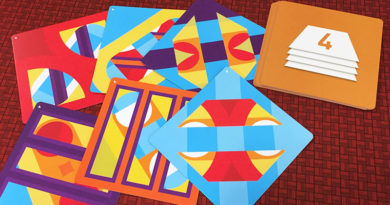7 Wonders Architects board game review
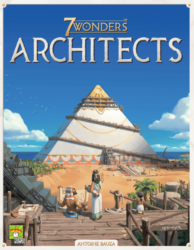
Way back in 2012, we reviewed a hot new card game getting a lot of buzz – 7 Wonders.
While it looked intimidating with so many colors and symbols, it quickly became a family hit – even for mom!
Fast forward a decade and Asmodee released a new standalone iteration on the theme with 7 Wonders Architects.
The game play is quite different while still feeling familiar for those who enjoy the original. It’s a much simpler card game and also includes players physically building their personal wonder in stages.
And because it’s a standalone game, one wonderful thing is that you don’t have to know the original to enjoy 7 Wonders Architects.
How to play 7 Wonders Architects
The goal in 7 Wonders Architects is to gain the most victory points by building stages of a wonder, making scientific discoveries, and building up military might.
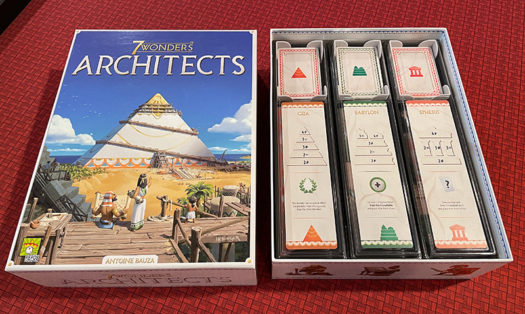
Set up is very simple as each player chooses a wonder tray that contains the 5 stages of their wonder and a deck of cards specific to that wonder. Players shuffle their cards then place the deck face up between themselves and the player to their left.
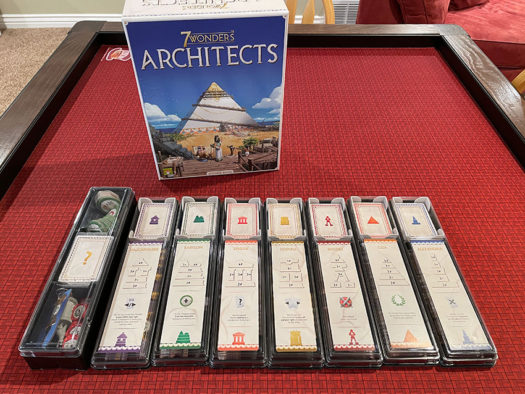
The large deck of cards is also shuffled but placed face down in the center. The green progress tokens are shuffled and placed in a face down stack. Then 3 are drawn and placed face up. Lastly, players set out a certain number of conflict tokens, Peace side up, depending on the number of players.
On a player’s turn they simply draw a card from one of 3 possible piles. They can draw a face up card from either of the decks to their right or left or they may draw a face down card from the center deck.
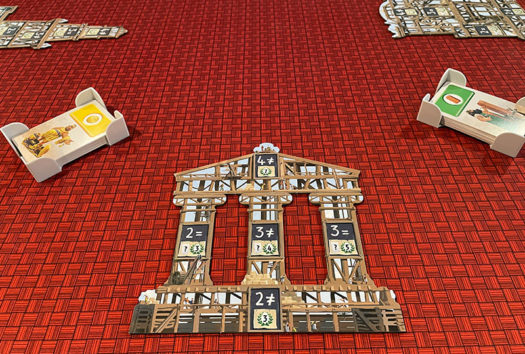
Each type of card (5 colors) does different things:
Grey: These are resources and they’re used to build wonder stages. Players must start at the bottom of their wonder and build up. Each stage indicates the resources needed to build it. Players can not store resources for later. As soon as they have cards that match the next stage of their wonder, they must build it by flipping it over to its scoring side.
For example, the first stage of most wonders has a “not equal” sign with the number “2”. As soon as a player has 2 resource cards that are different, they build that stage of their wonder. If it shows an equal sign, then the resources must be the same. The coin resource is wild and can serve as any other type of resource.
Players discard their resource cards as soon as they’re used to build a stage.
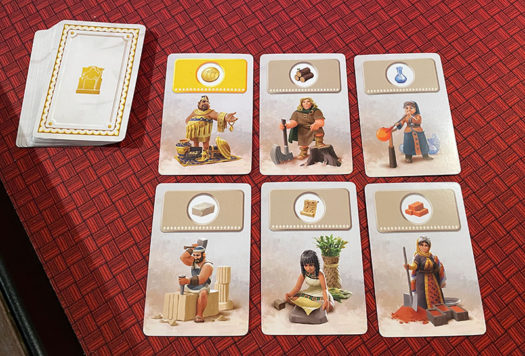
Green: There are 3 types of these science cards (tablet, cog, protractor). As soon as a player has 2 of the same symbol or 3 different symbols, they choose a green progress token. They may choose one of the face up tokens or draw the top token from the face down stack. Each progress token grants a special ability for the rest of the game or additional points.
For example, some progress tokens let players draw additional cards when they take a certain action. Such as the token that shows 2 resources. If a player draws a card with one of those indicated symbols, they get to draw another card.
Players discard the science cards as soon as they’re used to gain a progress token.
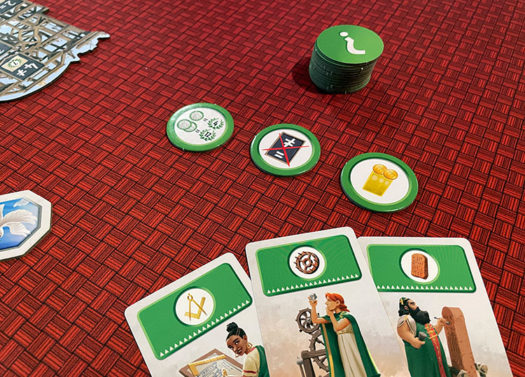
Blue: These are pure victory points and come in 2 values. The 3 is worth 3 points at the end of the game. The 2 also has a cat symbol on it. When a player draws this card, they also take the cat pawn. While they have the cat pawn, on future turns they may first peek at the top card of the central deck before deciding which card to draw.
Players place all their blue cards face up and keep them until the end of the game for scoring.
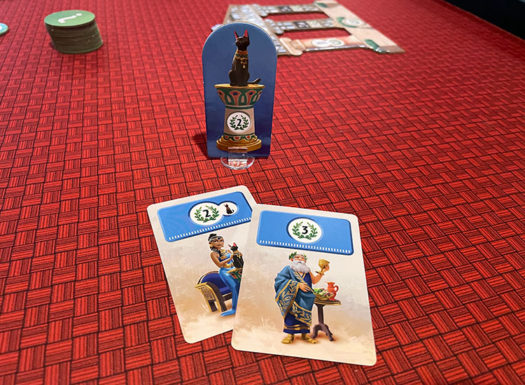
Red: These are military shields and come in 2 versions. The shield with a horn is a temporary shield and the other is permanent. When a player draws a military card with 1 or 2 horns, they flip over that many conflict tokens to their red side.
As soon as the last conflict token is flipped to the red side, a battle occurs. Players compare the amount of shields they have with both of their neighbors (to their left and right). The player with the most shields takes a 3-point red token. Thus, if a player has more than both their neighbors to the left and right, they would gain two 3-point tokens.
After the comparison, players discard any of their red cards with a horn and all conflict tokens are flipped back over to their Peace side.
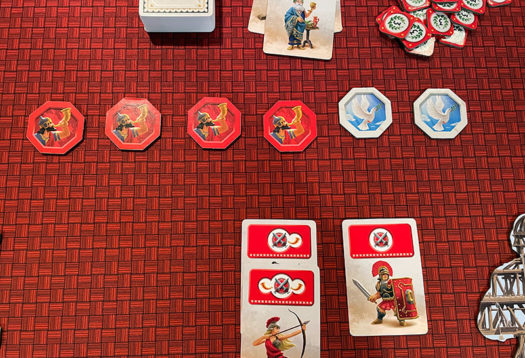
Yellow: These are coin cards that serve as a wild resource. They match up with grey cards for building stages of a wonder as mentioned above.
In addition to the cards, each wonder has unique elements that grant special abilities to the various players. When a player builds a stage of their wonder that also shows a special symbol, the player gets that special action. The tray for each wonder explains what its unique ability is.
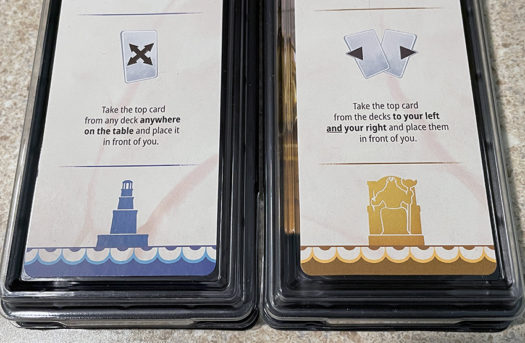
For example, 2 of the Babylon wonders stages grant that player a progress token. Whereas, 2 of the stages of Rhodes grant that player additional permanent military shields. And the 3 columns in Ephesus let that player take the top card of the central deck.
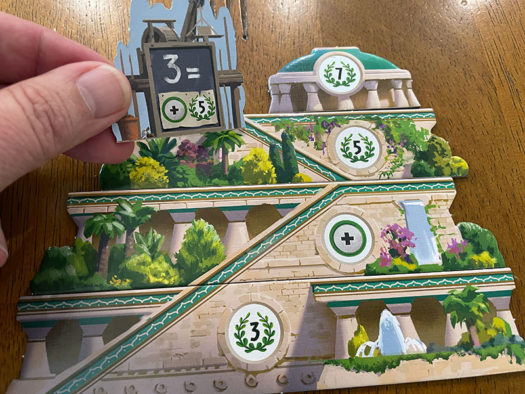
The game ends as soon as one player builds the final stage of their wonder.
Then all players add up their victory points.
- Completed wonder stages
- Blue cards
- Military point tokens
- Progress tokens
- Cat pawn (worth 2 points)
The player with the most points wins.
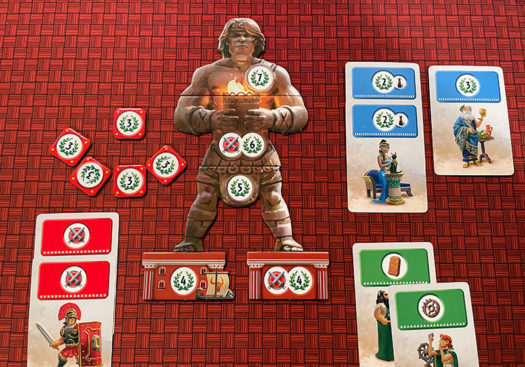
Can the whole family enjoy 7 Wonders Architects?
7 Wonders Architects is a fantastic family board game because of its ease of play, short play time, good balance of luck and strategy, and replay value.
As you can see from the section above, the game play is very straightforward. So players of most ages will be able to enjoy playing.
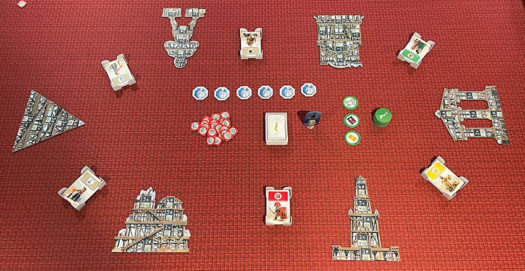
On their turn, players simply choose which card to draw and then use its benefit. And since there are essentially just 4 card types to consider (since the yellow is a wild), they’re easy to keep in mind.
This single choice for player turns also means that the game flows very quickly and there’s not much downtime between your turns.
Once players gain some progress tokens, they may be able to draw additional cards on their turn, but that still goes very quickly.
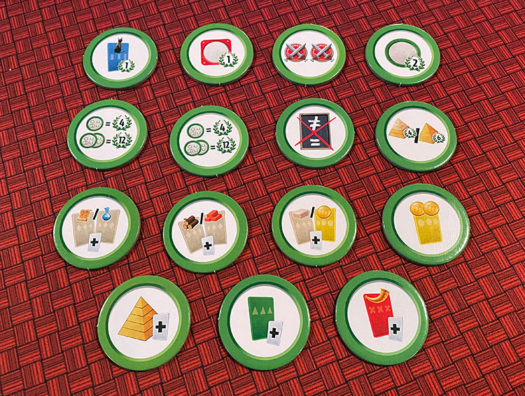
Plus, the game allows up to 7 players to join in the fun without adding much to the length of the game itself. The game goes super quick with just 2 and 3 players, but really not much longer with 7 players.
We also like the balance of luck and strategy in the game. Since it’s a card-driven game, there’s a big element of luck on which cards you’ll be able to choose from on your turn. And while that may impact what you were hoping for, chances are high that you’ll still be able to get something beneficial.
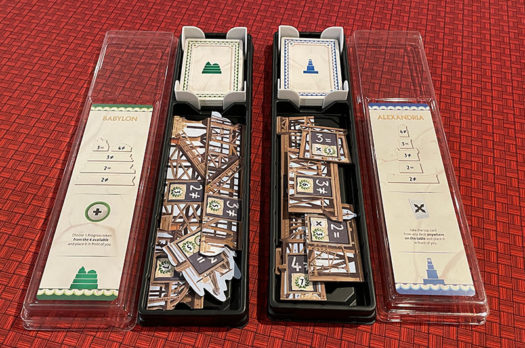
The strategy comes into play by playing to the strengths of the wonder you’re building. For example, if you’re playing Rhodes, its special ability relates to the military so you may want to plan which cards you draw based on the goal to earn victory points through military might. Whereas, the Giza wonder doesn’t have special abilities for any of its stages, but instead grants more victory points than any of the other wonders for each stage. So if you’re playing Giza, focusing on gaining resources to quickly build your wonder will benefit you in the long run with more points.
And we absolutely love the storage trays for each wonder! Both setup and cleanup are a breeze as each wonder’s stages and deck are contained in their own tray. At the start, just grab the wonder you want or randomly pass them out and you’re ready to go. And in the end, just sort the cards from the discard pile by card back and put them back in their tray. Bingo – all set for next time.
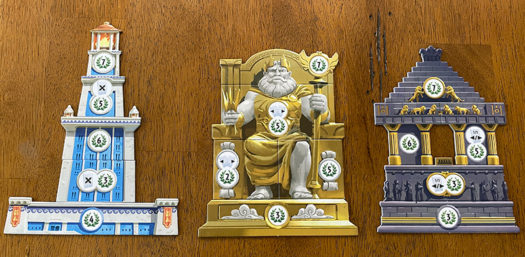
How does 7 Wonders Architects score on our “Let’s Play Again” game meter?
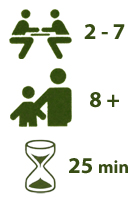 7 Wonders Architects scores very high on our “let’s play again” game meter because of the very reasons we just outlined.
7 Wonders Architects scores very high on our “let’s play again” game meter because of the very reasons we just outlined.
Because each wonder has their unique special abilities, it’s super fun to play games back to back by switching up which wonder you’re playing. Just sort the cards from the discard pile, shuffle the decks, shift around the wonders and dive into playing again.
As much as we love the original 7 Wonders game, we view 7 Wonders Architects as a more family-friendly game to play and highly recommend it!



